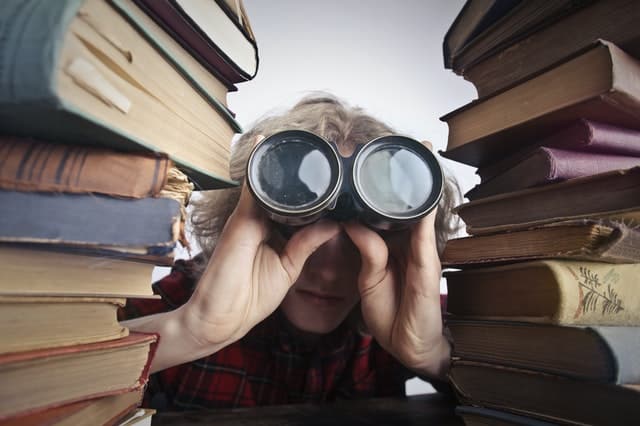Behind the Pen: How Research Shapes Nonfiction Ghostwriting
October 31, 2024
Accuracy is the cornerstone of nonfiction ghostwriting, whether the project is a memoir, historical biography, or business book. At its core, nonfiction relies on thorough research and meticulous reporting.
When it comes to writing nonfiction books, ghostwriters do much more than write; they delve into facts, verify details, and ensure that the final product is grounded in reality. Research not only lays the groundwork for a book but also provides balance to its message.
In this blog, we’ll explore the research strategies employed by nonfiction ghostwriters to maintain accuracy and discuss the importance of having skilled professionals for such projects.
Key Research Techniques Nonfiction Ghostwriters Use
In nonfiction ghostwriting, good research isn’t just important; it’s essential — the foundation of any well-crafted manuscript. And a nonfiction ghostwriter is more than just a wordsmith.

Whether writing nonfiction or fiction, the ghostwriter must ensure that the facts are accurate, thoroughly detail the subject, and deliver a book with a high level of authority.
The research process varies by genre. Crafting a memoir means talking to the subject and uncovering long-forgotten memories, while writing a business book might involve analyzing statistical data, conducting case studies, or interviewing industry experts.
The ghostwriter must be prepared to tackle any type of research based on the project.
Furthermore, the final manuscript must be both engaging and accurate.
Research skills employed by nonfiction ghostwriters also vary. These may include fact-checking published sources, thoroughly exploring a subject area, or researching a plausible narrative. But what are some basic research methods ghostwriters rely on to create credible, authentic stories with real-world content? Let’s consider a few of them.
Primary Source Research
Any good nonfiction book starts with primary sources. Nonfiction ghostwriters often seek original documents, interviews, and firsthand accounts when crafting their stories. Legal documents, government records, personal letters, and eyewitness testimonies are all potential sources of information that can bring the narrative to life. For historical books, access to archives and libraries with original manuscripts can be crucial. In biographies or memoirs, personal interviews are key to capturing the unique voice and perspective of the subject.
Secondary Source Research
Secondary sources such as books, journal articles, documentary films, and reputable online resources can also inform a ghostwriter’s work. These sources help situate the primary content within a larger historical, cultural, or social context, ensuring the story resonates with a wide readership.
Interviews with Experts
Ghostwriters often interview subject matter experts. When writing a nonfiction book on a scientific topic, a ghostwriter may speak with a researcher or professor specializing in that area. In business or self-help books, insights from industry leaders or experts can lend credibility and enrich the material, making the narrative more authentic.

How Ghostwriters Ensure Accuracy and Depth in Nonfiction
Getting every detail right is a crucial aspect of a professional nonfiction ghostwriter’s job. Nonfiction books are expected to be factually accurate, well-researched, and insightful. Thus, ghostwriters must continually refine their eye for detail and employ effective techniques for in-depth research. Below are some strategies nonfiction ghostwriters use to ensure their work is accurate and nuanced.
Collaborative Fact-Checking with the Client
Perhaps the most valuable resource for a ghostwriter is the client—an expert in the subject matter or someone with life experiences relevant to the book. Ghostwriters often collaborate closely with clients to verify factual details, ensuring that every name, experience, and date is accurate. The client’s input adds richness and intimacy to the material.
Staying Current with Industry Trends and Research
Ghostwriters working on certain types of nonfiction—particularly books about industries, topics, or trends such as business, health, or technology—constantly research the latest developments. They often access academic journals, attend conferences, and read industry-specific publications to ensure the manuscript contains the most current data. Staying on the cutting edge is vital for subjects that change rapidly, such as medicine and technology.
Using Specialized Tools and Databases for Deep Research
For more complex subjects like law, finance, or science, ghostwriters utilize digital subscription databases such as JSTOR, LexisNexis, and ProQuest to add depth to their work.

These resources enable ghostwriters to incorporate layer upon layer of detail, making the arguments and characters more plausible, nuanced, and engaging.
Client collaboration, staying informed about new information, and utilizing specialized resources help nonfiction ghostwriters create manuscripts that are both technically accurate and rich in detail, distinguishing good nonfiction from superficial works.
Balancing Research with Storytelling in Nonfiction Ghostwriting
One of the biggest challenges for nonfiction ghostwriters is balancing thorough research with good storytelling. If a nonfiction book is overloaded with statistics or dry facts, the narrative can become bogged down. Conversely, if too much information is omitted, readers may struggle to follow the narrative. Here’s how nonfiction ghostwriters manage the research/storytelling balance.
Weaving Facts into an Engaging Narrative
A skilled nonfiction ghostwriter knows how to integrate facts into the narrative without overwhelming the reader. This involves selecting impactful research and presenting it in a way that supports the story. For example, in a biography, the ghostwriter might depict a key historical event as a scene, providing context for dates and accomplishments without disrupting the narrative flow.
Pacing the Information Flow
Ghostwriters carefully manipulate the pacing, revealing elements of the story and providing information at just the right moments to maintain reader engagement. When presenting information-heavy sections, techniques such as suspense, foreshadowing, and characterization keep the reader’s attention.

Instead of dumping information in one go, ghostwriters strategically distribute insights in a digestible manner, using narrative tools to enhance pacing.
For instance, in a historical nonfiction book, the ghostwriter might start with an intriguing fact about a historical figure or a scene and gradually reveal deeper insights later in the narrative. This layered approach creates a rhythm that encourages readers to keep turning the pages.
The Importance of Fact-Checking and Verification in Nonfiction Ghostwriting
Nonfiction ghostwriters are only as good as the accuracy of the information they present. This is especially true for sensitive or historical topics, where the reputations of both the ghostwriter and the client are at stake.
A robust fact-checking process is integral to effective nonfiction ghostwriting. As Sarah Harrison Smith, who recently oversaw fact-checking at The New York Times, puts it: “Accuracy is not optional; it is vital to fostering trust.”
In the digital age, where readers can easily verify facts, the damage from inaccurate information can be irreparable.
Balancing Research with Creativity in Nonfiction Ghostwriting
One of the primary tasks of the nonfiction ghostwriter is to weave factual material into a compelling narrative that resonates with readers.

The challenge is to maintain factual integrity without turning the book into a dry academic treatise.
In nonfiction ghostwriting, research is not just about gathering facts; it’s about uncovering the stories behind them.
The best ghostwriters excel at transforming dry data, old documents, and research findings into narratives that evoke emotional depth.
As Janice Hickey, a ghostwriter, stated in an interview with the Los Angeles Times in 2014: “Writing is like defragging; it gets at the emotional core of the story.”
Tailoring the Writing to the Audience
Research and creativity also involve calibrating the material for the audience. A nonfiction ghostwriter must consider how much technical detail readers will appreciate. For a mainstream audience, the ghostwriter might focus more on storytelling, while for a specialized readership, more rigor and data may be appropriate.
Understanding the audience ensures that the final product meets readers’ expectations without compromising the integrity of the research or the quality of the narrative. A hallmark of any good ghostwriter is the ability to tailor the work to fit the project’s demands, striking the right balance between research and creativity.
Conclusion
Research is the foundation of successful nonfiction ghostwriting. It’s not just about accumulating facts; it’s about filtering them to create a compelling story. Accessing archives and interviewing subject matter experts bring the final piece to life, adding authority to the work.
Whether you need help writing memoirs, histories, or niche topics, hiring a nonfiction ghostwriter means enlisting someone who knows how to research and craft complex ideas into engaging narratives.
The ghostwriters at The Writers For Hire excel in research-based projects. We know how to tell your story while respecting the facts. Let us handle the heavy lifting and in-depth research while you focus on the big picture: a book that is both entertaining and factually substantial. Contact us to learn more about how we can help you realize your writing dreams.






























